AdventureSmith Explorations Founder and President Todd Smith reviews his Anakonda Amazon Cruise.
My recent cruise aboard the Anakonda began the same way as most other trips to Ecuador’s Amazon, but in the end it was completely different.
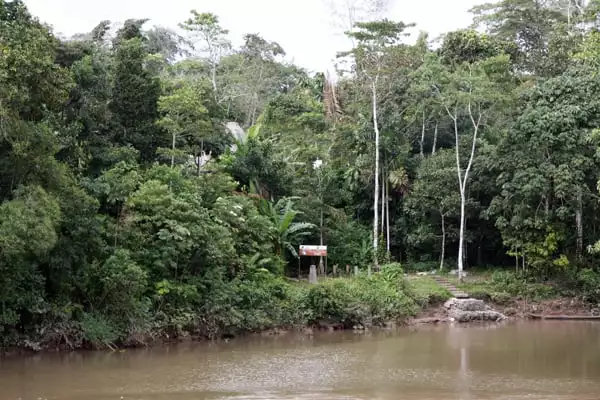
Day 1 – Quito to the Amazon
The flight from Quito to Coca is a short one at only 35 minutes, but the difference could not be more dramatic. Taking off from Quito at about 9,000 feet in the Andes mountains in only 120 miles we descend to the headwaters of the Amazon but only after passing over 22 different habitat types. Ecuador is one of the most diverse countries in the world, and its Amazon region (also known as the Oriente) region contains most of that biodiversity.
Upon arrival in Coca we descend from the plane into the heat and humidity of the rainforest. We gather our bags and proceed by bus for a short 10-minute transfer to our dock. Modern-day Coca (officially known as Francisco de Orellana in honor of the first European to navigate the Amazon) was born of the Ecuadorian oil boom of the 1970s. Formerly a village of less than 10,000 people, Coca now has nearly 500,000 inhabitants. At the dock we spot our first wildlife, a spider monkey daftly bouncing along the tops of wrought-iron spears on a gate leading to the dock. We are excited and amazed at its agility in the urban environment and hope the sighting is a harbinger of things to come.
A nearly two-hour motorized canoe ride down the Napo River leads away from Coca, the oil platforms and most of civilization to a stretch of river where a number of well-known jungle lodges are located. We round a final bend in the river and tied to a tree along the bank is the Anakonda, our home for the remainder of our journey. The crew greets us with a snack and fresh-squeezed juice, a ritual we would grow accustomed to on our many daily outings, and we are shown to our rooms. Immediately upon boarding the Anakonda I realize this is not your typical Ecuadorian Amazon experience.

As you first gaze at the Anakonda while arriving by motorized canoe she looks exactly what you would expect an Amazon riverboat to look like. With a wood-paneled and glass exterior she is crafted in a timeless riverboat style with a contemporary modern flare. The Anakonda has three spacious decks with ample room in the lounge, outdoor patio, forward salons and a huge observation deck on top. The staterooms are well appointed with floor-to-ceiling windows and a large bathroom with massage shower. The suites are even larger with a balcony and Jacuzzi tub. The dining room is comfortable with great views and delicious cuisine, but it might be crowded when the ship is completely full. Fortunately they also serve al-fresco meals on deck. The interior of the ship and each stateroom has individual climate controls to keep things nice and cool. Another benefit to cruising aboard the Anakonda, when compared to the many lodges located in this part of the Amazon, is her ability to navigate farther down river visiting a diversity of rainforest sites.
We are shown to our cabins with a few minutes to relax and unwind before we meet in the lounge for an orientation with the guides. They outline the excursions and adventures planned for the trip. Immediately I am struck by their commitment to sustainability and passion for conservation.
Day 2 – Sani Village & Canopy Tower
Our first morning’s planned excursions were postponed due to fog, so I slept in instead of getting an early-morning wake-up call. We finally make our way to San Village, the community center for about 2,000 people who live along the river in this region. With pressure from oil companies to allow drilling on their land, the Sani people have so far opted to embrace ecotourism as an alternative. We learn that the pressure of quick oil money remains and is a source of constant tension in the community. Most of the men work at the nearby Sani Lodge. A few years ago the women, eager to contribute, started a number of conservation and ecotourism projects. Each guest pays a $40 fee (included in the cruise price) for the privilege of visiting the village, enjoying a guided tour and traditional meal.
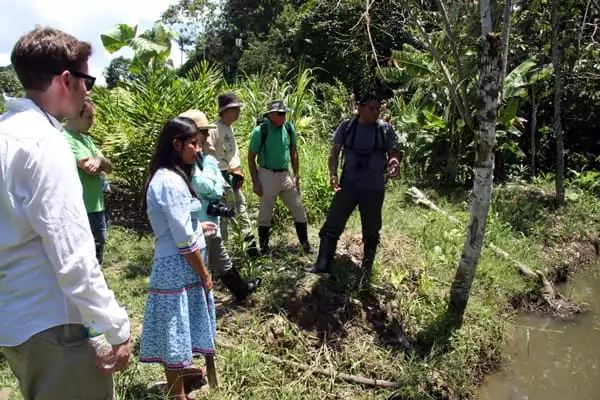
Our tour is led by a shy young woman in her early twenties dressed in a traditional floral print dress. She leads us to a fish pond and turtle pond where they rear fish to be eaten or to replenish stocks that have been overfished in the river. Nearby is the community garden with pineapples, manioc, bananas and a number of other traditional foods. Our small group then visits the community school where young children, dressed in their nicest clothes smile and giggle as the group of travelers learns that school is compulsory in Ecuador. Kids will attend the village school through 9th grade, after which they will have to relocate to Coca in order to finish high school. We are amazed that the simple school has dedicated teachers, internet access and provides these rural children with the same opportunity as other children throughout Ecuador.
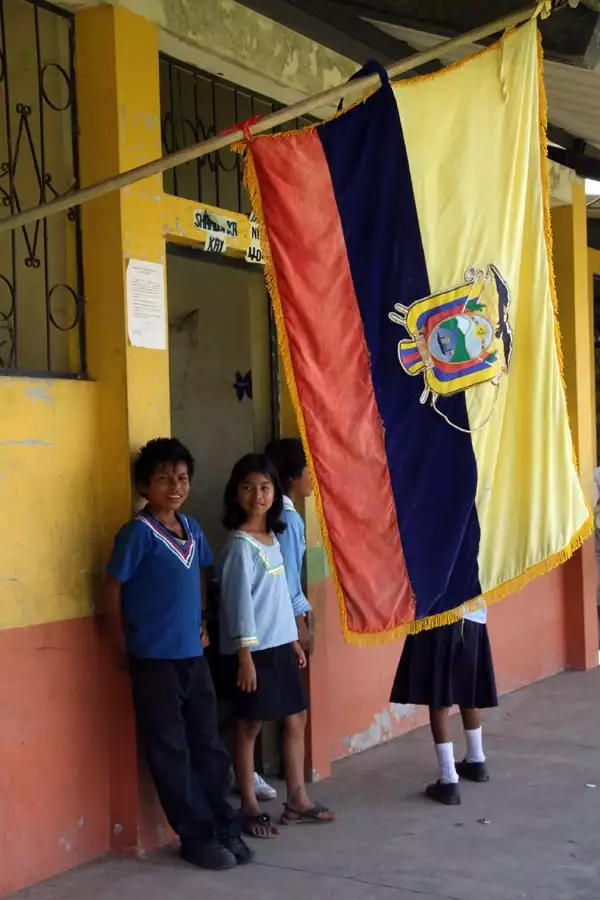
The highlight of the Sani visit comes when we enter the community house where a large fire is simmering pots of traditional food. Our guide is the first to partake, eating a live grub known as jungle bacon. Amazingly a couple of guests join in tasting the rainforest delicacy. Soon an entire meal of fish, plantains, manioc and cooked grubs known as jungle bacon, is spread out on giant banana leaves before us on the ground. We join our hosts sitting on the floor eating the delicious food and washing it down with Chicha, a local beverage fermented from manioc. The meal and the visit to the Sani village is a highlight of the trip and unlike other cultural tours does not feel forced, but instead feels very authentic and welcoming. The women thank us for visiting and as we descend the ramp to the dock the school children run down to wave goodbye.

We return to the Anakonda where another lunch is served, but not really necessary after the meal in San Village. After some time on board for siesta we are ready for our next adventure. A short 15-minute motor canoe ride leads to a small outpost where our group enters the jungle walking on a raised boardwalk. Immediately we are surrounded by birds, bugs, plants and animals. Our guides are busy pointing out wildlife and talking about medicinal plants. An easy 40-minute walk leads to a small blackwater creek where two dugout canoes await our arrival. The creeks are like a tunnel of green as we slowly paddle along in search of wildlife. After a while the canopy opens up and we ease into a large open lagoon. We pass the San Lodge and continue for 1.5 hours to a small trail in the jungle. After another 30-minute walk we encounter a huge tree with a metal stairway suspended to its side. The 130-foot stairway leads to a canopy platform in the top of this enormous tree. We arrive just in time for sunset and terrific opportunities to view monkeys and birds. From this observation tower we can see the sun setting over the peaks of volcanoes high in the Ecuadorian highlands.
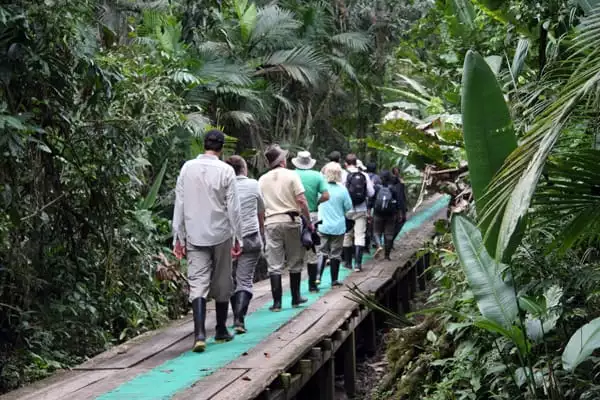
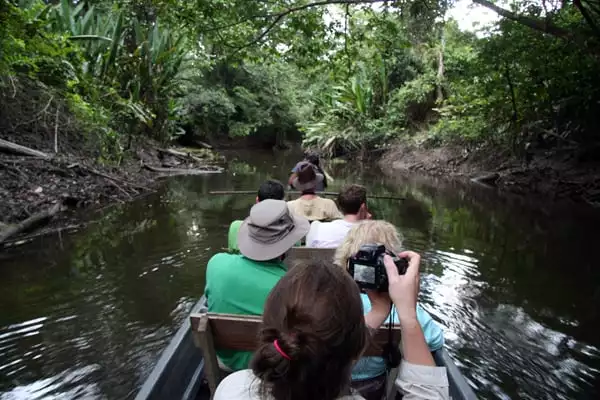


The return trip in the dark is even more spectacular than the trip out. Phosphorescent larvae light up the creekside like a miniature city. In the open lagoon the starlight and Milky Way are spectacular. And our guides find a couple of caimen hunting for fish. As we return across the elevated walkway our guides point out a number of nocturnal bugs and animals, including some spiders that make us appreciate our Anakonda accommodations. We return to the ship tired and thrilled. After a late dinner we are treated to an evening program reviewing the experiences from the day and a preview of activities for tomorrow.
Day 3 – Parrot Clay Lick & Limonchinga
After another hearty and delicious breakfast we meet in the staging area for our next adventure. Our boots and ponchos have been cleaned and folded from yesterday’s activities. We take the motorized canoe to a parrot and parakeet clay lick right on the shore of the river. Hundreds of birds, come here every day to eat clay that helps them digest the toxins contained in some of the seeds and fruit that they eat. We watch and listen to the cacophony of hundreds of birds coming and going, jockeying for position on the lick. All at once the birds are frightened by a predator and they are gone. Our guide explains that they are now done for the day and will not return again until tomorrow morning.

After the clay lick we head to a Kichwa community center. Much more developed than the Sani Village, this is a replica of a traditional Kichwa house and community center. We are treated to a traditional dance performance and a talk about traditional lifestyle. The talk is fascinating and the replica house really brings it to life, but the staged nature of the tour was not as satisfying as the Sani Village visit.
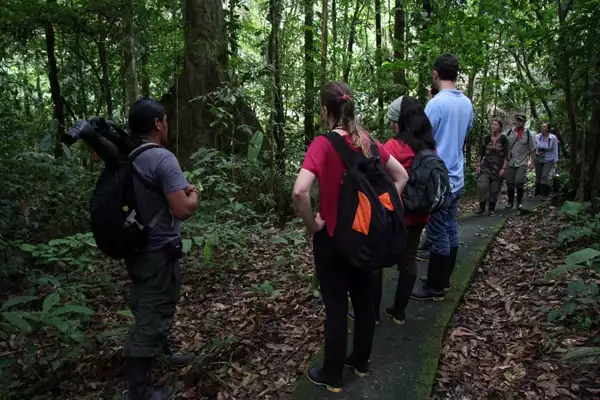
A short canoe ride leads to another trail into the jungle. This path has been hardened with concrete making it easy walking. We are led to a covered observation platform overlooking another clay lick deep in the forest. We wait patiently with a number of birders from other lodges, staying very quiet in hopes that the nearby birds will descend to the lick. The ruckus in the canopy is overwhelming, and after the easy sightings of our fist lick we grow impatient that the birds are not coming down. After about an hour the birds are almost within sight when suddenly something startles them and hundreds of birds that were hiding among the trips flee to safety. Our guides explain that it may take another hour or so for them to regain the courage to approach the lick, so we depart. On our way out the guides have the spotting scope directed at a beautiful pair of scarlet macaws and the view makes the observation platform experience worth it. We return to the Anakonda for long lunch as the ship makes its way back up river.
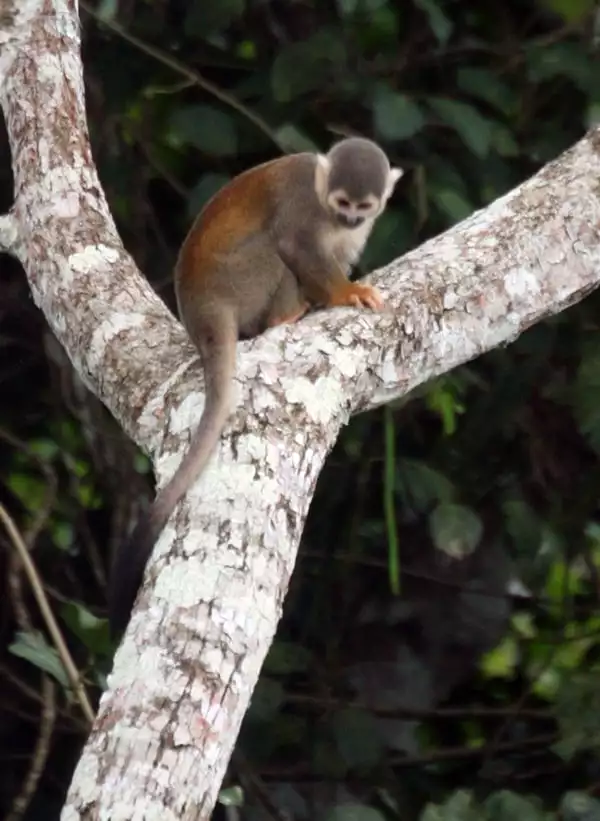
About 4pm we board the canoe and head to the town of Limonchinga and the Limonchinga Nature Reserve. Set aside by the oil companies the Limonchinga reserve was a “gift” to the community, most of whom now work in the nearby oil fields. Despite the fact that we could hear the hum of oil pumps in the distance the Lomonchinga reserve was full of wildlife. On our way to the canoe and dock we were delighted by the antics of several pygmy marmosets, the smallest primate in the world, about the size of a small squirrel. After only a few minutes in the canoe we see a large troop of spider monkeys climbing, jumping and playing in the trees. A number of birds are spotted as we paddle by locals fishing for their dinner. After dark we hunt caiman and sight several before spotting a 4-meter giant – a great finish to the day. We return to the Anakonda for another late dinner.
Day 4 – Return to Quito
After an early breakfast we board the canoes one last time for the two-hour return trip to Coca. This short cruise was a fantastic introduction to the Amazon and the time aboard the Anakonda is pleasurable. For travelers seeking the best possible experience aboard the Anakonda, I would suggest the 4-night/5-day cruise itinerary or longer. The longer trips are able to transit farther down river, avoiding development while offering a more wilderness-oriented trip. The longer trip extends beyond the Yasuni National Park to visit Cuyabeno Natural Reserve with excellent bird and wildlife viewing, and opportunities to see pink dolphins.
This Ecuador Amazon river cruise review was written by an AdventureSmith Explorations crew member. View our full selection of Amazon cruises. Read all Cruise Reviews for more trip reports, or contact one of our Adventure Specialists to learn more about these small ship cruises and wilderness adventures: 1-800-728-2875.
Comments will be moderated and will appear after they have been approved.